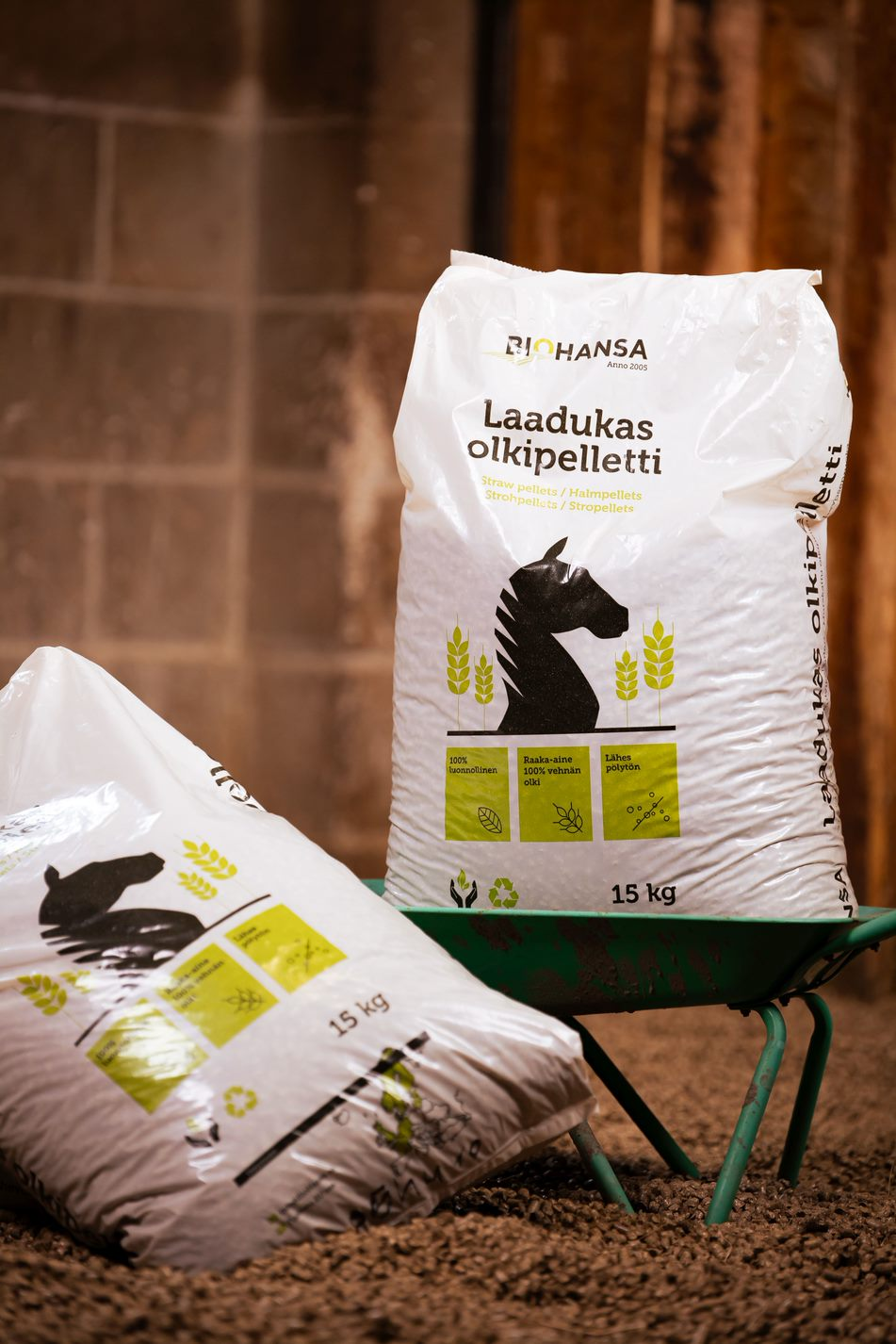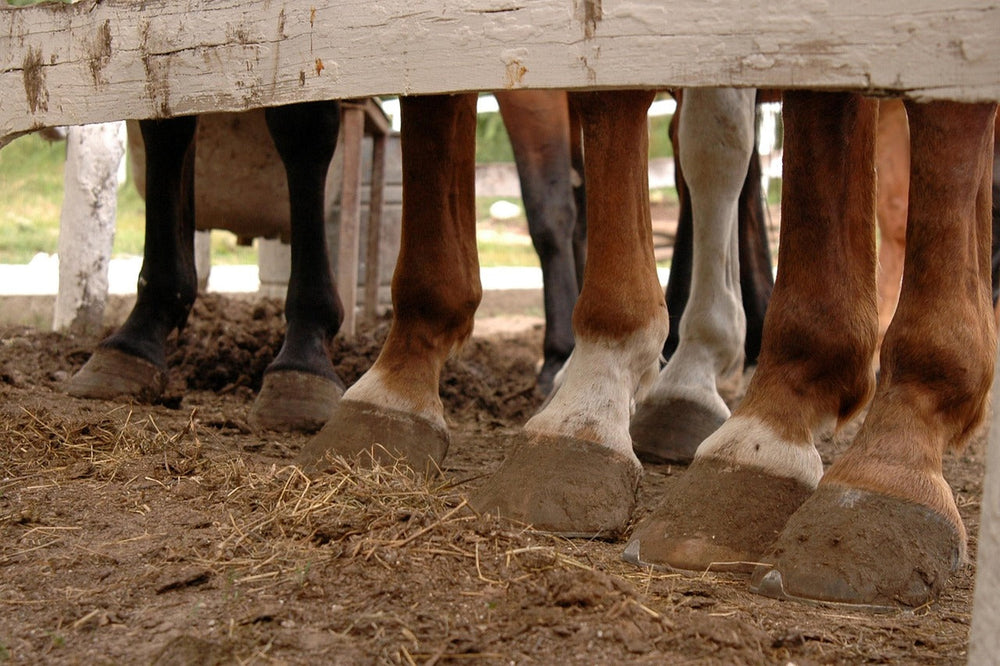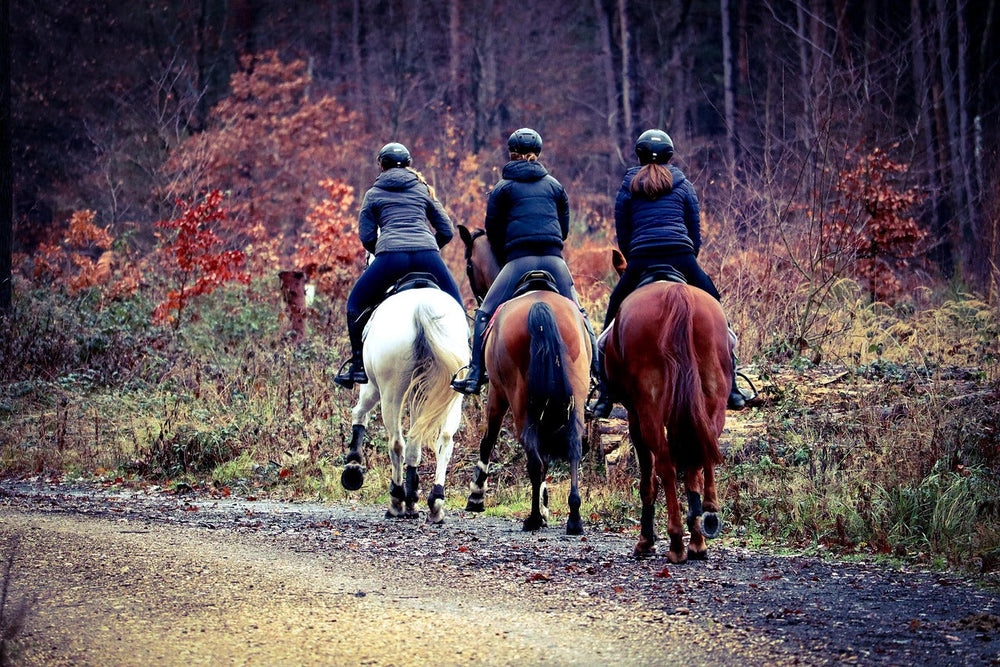
The daily life of the stable is built around recurring routines. Well-planned and consistently implemented daily routines not only make work easier but also save on costs and improve the horses’ well-being. Horses learn routines quickly, and these become part of their mental welfare. Familiar routines provide a sense of security.
One significant part of stable life is the use and management of bedding. Routines also play a major role in how much bedding is consumed.
Regular cleaning and stall-maintenance routines help reduce bedding consumption significantly. When stalls are cleaned thoroughly and daily, you can preserve the clean sections of bedding and remove only the soiled material. That way, you don’t have to keep topping up fresh bedding constantly—saving both on costs and on the total amount of material used. Compare bedding materials.
Moreover, the right cleaning technique prevents wastage, so all stable staff should be trained in economical cleaning. However, bedding should never be conserved at the expense of the horse’s well-being.
Easy bedding material lightens the work
The quality of the bedding material directly affects how much time and effort stall cleaning takes. Light and easy-to-handle beddings—such as Biohansa’s new flax bedding—make cleaning lighter and faster.
Good bedding absorbs moisture efficiently, keeping the stall dry and fresh. It’s also easy to work with using a manure fork, and it doesn’t strain the stable worker ergonomically, even when there are many stalls to clean (meaning more trips to the manure pile).
High-quality bedding produces little to no dust, which improves the air quality in the stable.
When the work flows smoothly and is easy on the body, workers feel less fatigued and have time for other maintenance tasks. At the same time, the horses’ living environment stays clean and comfortable.

The smoothness brought by routines
Well-planned daily routines establish a clear rhythm in the stable, where both people and horses thrive. When each task has its own time and place, work doesn’t pile up—and potential issues are spotted early.
In addition to feeding and stall cleaning, stable routines include regular checks and cleaning of water and feed buckets, and clearing of paddocks. Manure removal is scheduled according to each stable’s own finishing system.
All of this helps maintain the stable’s cleanliness, keeps clients happy, and—above all—supports the horses’ health and the staff’s well-being.
Examples of routines
If, for example, an indoor barn houses about 20 horses, the daily routines are built around a tightly scheduled series of tasks. The morning begins with a general health check, feeding, and, if needed, blanketing.
Next, the horses are turned out to the paddocks, after which the stalls are cleaned thoroughly. Throughout the day, tack is maintained, hay is distributed, and riding or other exercise activities—such as walking or lunging—are taken care of.
In the afternoon or early evening, the remaining horses are brought in and fed. In the evening, the late-night feeds are given, water bowls are checked, and stalls are tidied up lightly if necessary. In some barns, a late-night check is performed to ensure all horses are comfortable.
In open-stable systems, routines differ, since the horses themselves choose when to be inside or out. Open-stable stalls may be cleaned less frequently, but often they are still tended daily.
Turnout time matters
How long horses spend outside has a huge impact on both stall-cleaning routines and bedding consumption. If horses are out for, say, 6–10 hours a day, stalls stay cleaner since most of the manure and urine happens outdoors.
This means less manure in the stalls and less used bedding. Bedding consumption drops because more clean material remains. The air in the stable also stays fresher, benefiting the horses’ respiratory health.
With shorter turnout periods—only a few hours a day—the horses do most of their business in the stall. In that case, stalls become soiled more quickly, cleaning takes longer and is more laborious, and more bedding is used because there’s more waste to remove.
Long turnout times therefore ease the cleaning workload and save both time and bedding costs. Most importantly, long periods outdoors are good for the horses, allowing them to move freely and enjoy fresh air.






